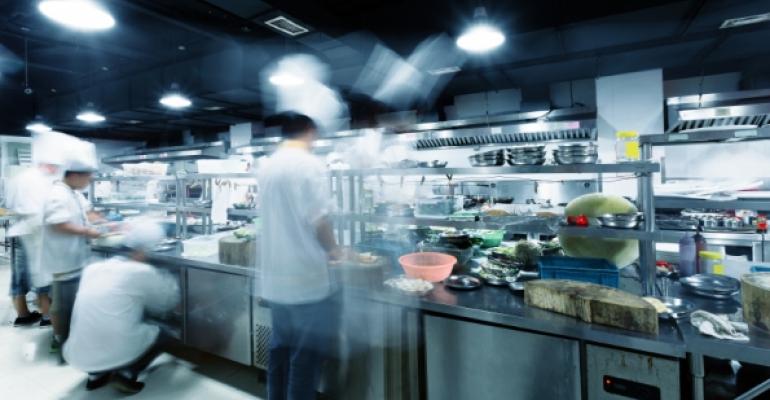“This system we have actually channels refrigerant down and inside each drawer to maintain a consistent temperature,” says Flynn. “And since we serve a lot of seafood, temperature control is the absolute most important thing.”
Such customization comes with a price, says Alec Bauer, owner and consultant at Kitchen, Restaurant + Bar Specialists in Burlington, Vt. But he adds that the cost of tailoring refrigeration specifically can pay for itself through increased kitchen efficiency and guest throughput.
“The question of drawers and doors comes down to the type of operation it is and what they’re serving,” says Bauer, whose firm focuses primarily on independent restaurants. A fine-dining kitchen’s needs are different from a quickservice spot due food preparation methods, he says, plus “it also depends on the flow of the line and how the chefs move within that space.”
Doors nearly always are “field reversible” for opening in a preferred direction, which Bauer notes is especially important were cooks share a single refrigeration unit.
“You need to make sure those doors are opening away from the cooks that are going to be utilizing what’s in those refrigerators,” he says. “You don’t want them bending down over the door to get inside.” He also warns against having doors that open toward other dangerous equipment such as fryers.
“If the door pushes a cook closer to the fryer, that’s not good,” he says. “Cooking is full-contact ballet, and so the configuration has to benefit the direction the line is flowing.”
Refrigerator manufacture Hoshizaki America recently introduced a line of caster-mounted, refrigerated equipment stands whose top surfaces utilize a built-in heat shield to reflect ambient heat radiating from cooking equipment placed atop those units. Designed for high volume, their drawers accommodate two, six-inch-deep pans to store large quantities of ingredients. Plus, their pan rails include a unique finger cut-out design that allows quick and easy pan extraction.
“When you’ve got a chain operator cooking 200 burgers an hour, they need drawers under the grill,” says Bauer. “We’ve seen many high-volume operations that benefit from refrigeration located below open burners. Any of it can be configured to the chef’s heart’s content.”



